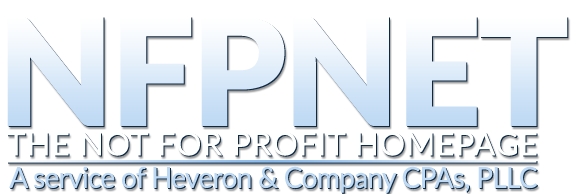Tag Archive for: affordable housing
Spring 2019 Newsletter
Download the complete newsletter HERE
INSIDE THIS ISSUE
- What Makes Affordable Housing a Charitable Activity?
- Candid: The merger and rebranding of The Foundation Center and Guidestar
- IRS Audit Targets for 2019
- Nonprofit Inflation Adjustments for 2019
- How to Develop a Dashboard Report for Your Board
- WebStar Winner: New York State Charities Bureau
Download the complete newsletter HERE
Affordable Housing Developers May Benefit from Opportunity Zone Tax Break
Winter 2018 Newsletter
Download the complete newsletter HERE
INSIDE THIS ISSUE:
• Check Your Website… the IRS will!
• Cyber Scam Update
• Federal Micro Purchase Threshold Has Been Increased
• Good News and Bad News About Donor Advised Funds
• Affordable Housing May Benefit from the New Opportunity Zone Tax Break
• WebStar Winner: NetHope
Download the complete newsletter HERE
Affordable Housing-Paying for Your Section 168(h) Election
When a nonprofit is involved in an affordable housing or similar project with a for profit investor, the nonprofit generally uses a taxable for profit subsidiary to hold the property. The benefit of this is that the property can be depreciated over 27 ½ years rather than 40 years, which means a better tax results for the investor, and translates to a higher price for the tax credits.
However, to get this treatment the taxable subsidiary must make an election under Internal Revenue Code section 168(h)(6)(F)(ii). The effect of this election is that
dividends or interest, paid from the taxable subsidiary to the nonprofit parent, are taxable as Unrelated Business Income.
This requirement only exists when not all tax attributes between the project and its owners (share of income and loss, distributions, equity) are the same. But, that usually is the case for these joint venture projects
Additionally, any gain from disposition of an interest in the taxable subsidiary is also taxable as Unrelated Business Income to the nonprofit.
Techniques for reducing tax on dividends, interest or dispositions include, first repaying all loans and developer fees to the nonprofit sponsor. Additionally, the entity holding the project (usually a limited partnership) can make payments directly to the nonprofit as reimbursement for expenses. However, the nonprofit needs to document that these expenses are costs the nonprofit has incurred in behalf of the project.
Examples of allowable costs include payroll and related taxes, and benefits, as well as indirect costs that are necessary for providing services to the project. Indirect costs typically include items such as occupancy, insurance, general accounting, and administration.
Fall 2018 Newsletter
Download the complete newsletter HERE
INSIDE THIS ISSUE:
• Changes in Your Legal Form
• New Financial Reporting Implementation Guide
• New Publications and Updates from IRS
• The De Minimis Indirect Cost Rate: Not All It’s Cracked Up to Be
• Affordable Housing: Paying for Your Section 168(h) Election
• The Other Public Support Test: the 10% Facts and Circumstances Test
• WebStar Winner
Download the complete newsletter HERE
Summer 2018 Newsletter
Download the complete newsletter HERE
INSIDE THIS ISSUE:
• New IRS Search Engine for Eligible Charities
• Affordable Housing Is Impacted by Recent Federal and State Legislation
• The Charities Bureau Moved!
• Charter School Audit: What to Expect From a New York State Comptroller Audit
• IRS Review of Your Website and Social Media
• Sexual Harassment Guidance from the Center for Community Research
• WebStar Winner
Download the complete newsletter HERE
Spring 2018 Newsletter
Download the complete newsletter HERE
INSIDE THIS ISSUE:
• How the New Tax Laws Affect Nonprofits
• Stephanie Annunziata, CPA, presents a nonprofit update to the Monroe County Bar Association
• Leading with Intent: a BoardSource Report
• Volunteering Out of Unrelated Business Income Taxation
• How the New Federal Tax Law Affects Affordable Housing
• The Best Board Meeting Ever!
• WebStar Winner
Download the complete newsletter HERE
